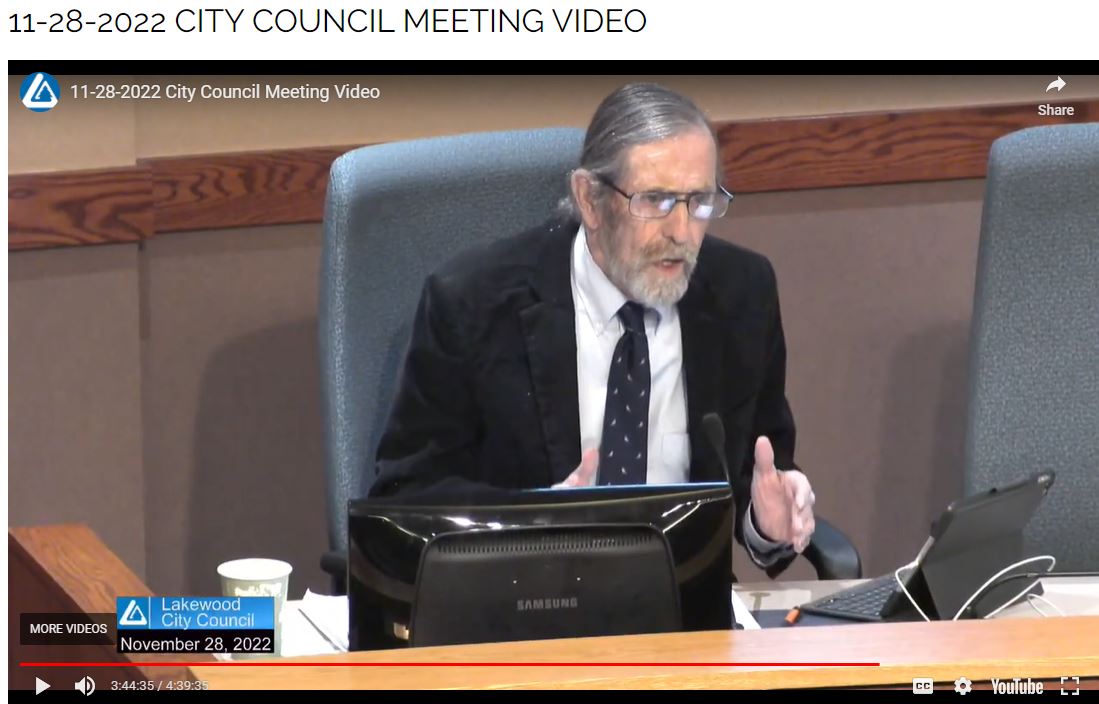“Lakewood uses blight” to go around voters
On November 28, Lakewood City Council was asked to designate a property on S Wadsworth Blvd as blighted.
Per Colorado Revised Statutes a “‘Blighted area’ means an area that… is a menace to the public health, safety, morals, or welfare”. This definition is included in statute as a way to target areas for urban renewal and perhaps increased funds.
But not in Lakewood.
“In your city, the purpose of a blight designation is to do housing”
“In your city, the purpose of a blight designation is to do housing,” says independent, redevelopment specialist, Anne Ricker. Ricker’s firm, Ricker | Cunningham, was hired to evaluate blight at 1000 to 1090 S Wadsworth Blvd. This specialist was accustomed to evaluating blight as a first step towards urban renewal, but in this case, Lakewood is not using blight for renewal, just for regulating a certain type of growth. In other words, using blight as a way to allow increased high-density residential growth.
City Council Member Able agrees with this assessment. He stated that the blight designation was used to get around Strategic Growth Initiative requirements that our community passed at the ballot box.

So when the council is asked to approve blight in instances like this, what they are really doing is considering approval of over 40 units of high-density, residential units.
To prove that we are talking about residential development, some Council Members talk about developing the existing commercial use. In response, the property owner responds that they really need all available options that the zoning allows for, in order to make the property economically viable.
“How many affordable housing units have been produced out of [blight provisions]?…. ZERO”
Councilor Able, November 28, 2022
Ironically, some of the problems noted in the blight study, such as limited access points, limited parking and crime, could all be exacerbated with higher-density use.
To make things more complicated, there appeared to be some confusion over City Council’s role. Several members seemed to suggest that Council should approve the request automatically, not because they agreed with the designation, but because the process had been followed. However, some followed up with the feeling that something was off.
Other council members had the idea that they could agree or disagree with the blight designation from the beginning. One member stated that you could blight anything if you wanted to. The problem was summarized, once again, by Councilor Able, when he suggested that the study appeared to be checking boxes without evaluating the deeper issue of a public menace, which is needed for blight.
In the end, the discussion turned to development rather than blight. Mayor Paul suggested that this blight designation go away so that applicants are not burdened with this process. The Mayor asked about using the new process of adding 20% affordable housing to a new development to bypass the blight designation. This discussion again reflects that “blight designation is used for development, not renewal, in Lakewood.” The 20% affordable housing provision also provides a “loophole” to the voter-approved Strategic Growth Initiative.
The designation was voted down. This was the second out of ten requests to be denied.
To review the new amendment authorizing the use of affordable housing to allow high-density growth, watch the video here.
Public Input Matters – Lakewood Informer
[…] (SGI), which was voted on and passed by the people. Since that time, Lakewood has been accused of using blight to go around SGI and not listening to the […]